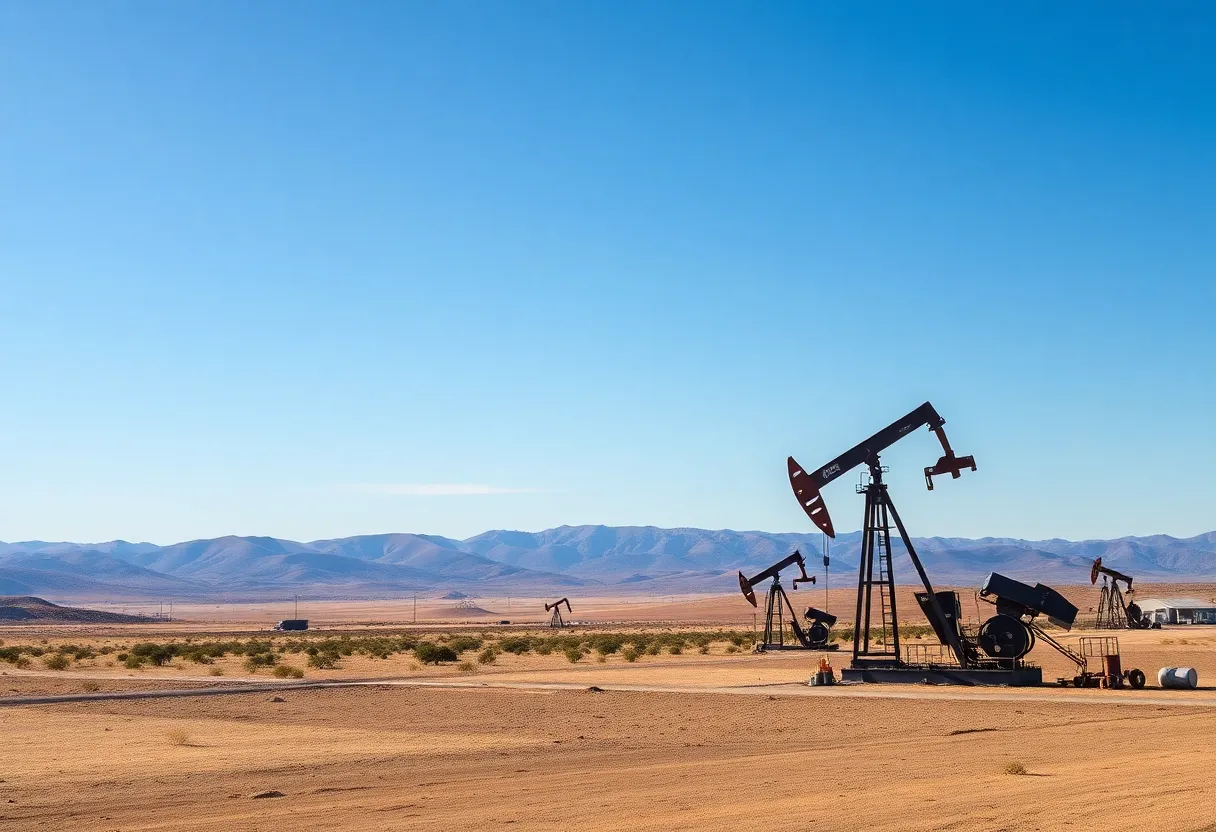California, September 24, 2025
News Summary
California has enacted new legislation to stabilize its oil supply amidst rising gas prices and refinery closures. Governor Gavin Newsom signed a measure allowing for the approval of up to 2,000 new oil wells each year in Kern County. As the state faces an average gasoline price of $4.65 per gallon, significantly above the national average, the law aims to ease reliance on foreign oil and support local production while balancing environmental concerns and climate goals.
California has initiated new legislation aimed at stabilizing the state’s oil supply as refinery closures and rising gas prices increasingly burden residents. Governor Gavin Newsom recently signed a measure that will facilitate the approval of 2,000 new oil wells each year in Kern County over the next decade. This oil-producing region is viewed as critical to alleviating the challenges facing California’s fuel market.
As it stands, California residents currently pay an average of $4.65 for a gallon of regular gasoline, a significant increase compared to the national average of $3.17. This price surge can be attributed to a decreasing number of operational refineries in the state, which is expected to drop from 13 to 11 due to planned closures of the Valero and Phillips 66 facilities. In 1983, the state boasted 40 refineries, illustrating a dramatic reduction in local refining capacity over the decades.
Governor Newsom emphasized that this new legislation seeks to stabilize gasoline supply and prevent sudden spikes in prices. Currently, California has become increasingly reliant on foreign oil sources, accounting for three-quarters of its oil demand due to the exodus of local production. Industry leaders anticipate that the change in policy might foster a more collaborative relationship between the state and oil companies.
Economic Implications
The current legislative framework aims to diversify the California fuel supply while stabilizing petroleum markets. In recent efforts, California has enacted a broad package of bills that promote the state’s transition to green energy while simultaneously striving to maintain affordable energy costs for consumers. This includes easing regulations on oil production in Kern County, which is designed to be both targeted and environmentally responsible.
As the state works to balance the need for fossil fuel production with the transition to greener energy solutions, questions about climate goals and the ramifications for communities near refineries remain. Advocacy groups have criticized the legislative developments, warning that they might undermine the state’s climate initiatives and impose disproportionate impacts on vulnerable communities.
Regulatory Changes
Another significant component of the legislation is the extended cap-and-trade program, which aims to reduce emissions from larger polluters until 2045, with plans to reinvest funds back into climate-friendly projects. Additionally, Governor Newsom’s administration has updated California’s Wildfire Fund to increase funding for utilities to cover wildfire liabilities, addressing another pressing concern for the state.
Although there are increasing pressures to transition to cleaner energy, legislators are faced with the challenge of ensuring consumers are not excessively burdened by rising costs. The recent alteration in regulatory strategies has also seen the California Energy Commission delaying proposed penalties aimed at capping excessive oil industry profits.
Amid these challenges, there has been speculation regarding the governor’s prior push for a ban on new gas-powered vehicles by 2035, a move that faced pushback from federal authorities. Overall, California is at a crossroads, grappling with how to effectively transition away from fossil fuels while simultaneously addressing the immediate needs of consumers in an environment of fluctuating prices.
Industry Perspectives
Industry leaders have expressed concerns about the ongoing difficulties of conducting business in California, citing the exit of oil companies as a growing issue. The hope is that the new legislation and efforts to revitalize oil production may improve the outlook for the state’s refining and fuel supply capabilities, ultimately benefiting consumers in the long run.
Conclusion
In summary, California’s latest legislation aims to stabilize oil supply amidst ongoing refinery closures and surging gas prices. The approach taken by Governor Newsom seeks not only to address immediate economic pressures but also to lay the groundwork for a smoother transition to renewable energy sources in the future.
FAQ
What is the current average price of gasoline in California?
California residents currently pay an average of $4.65 for a gallon of regular gasoline, significantly higher than the national average of $3.17.
How many operational refineries will California have following the closures?
The number of operational refineries in California is set to decrease from 13 to 11 with the planned closures of Valero and Phillips 66 facilities.
What new legislation did Governor Newsom sign?
Governor Gavin Newsom signed legislation that fast-tracks the approval of 2,000 new oil wells per year over the next decade in Kern County, a major oil-producing region.
What is the goal of the recent legislation?
The new legislation aims to diversify the state’s fuel supply and stabilize petroleum markets while balancing the need for fossil fuel production with the ongoing transition to greener energy solutions amid climate challenges.
| Feature | Details |
|---|---|
| New Legislation | Fast-tracks approval of 2,000 new oil wells per year in Kern County for 10 years. |
| Current Gas Prices | California average: $4.65/gallon; National average: $3.17/gallon. |
| Operational Refineries | Expected to decrease from 13 to 11 with closures of Valero and Phillips 66. |
| Reliance on Foreign Oil | California increasingly relies on foreign oil for three-quarters of its supply. |
| Environmental Regulations | Legislation aims to balance fossil fuel production with climate goals. |
Deeper Dive: News & Info About This Topic
- CBS News: Newsom’s Climate Strategy for California
- Wikipedia: California
- Politico Pro: Newsom’s Energy Affordability Package
- Google Search: California Energy Affordability
- LA Times: Newsom’s Oil Policies
- Google Scholar: California Oil Legislation
- ABC7 News: California Energy Regulators
- Encyclopedia Britannica: California Energy Policy
- Politico Pro: California’s Energy Market Changes
- Google News: California Oil Refineries

Author: STAFF HERE COSTA MESA WRITER
The COSTA MESA STAFF WRITER represents the experienced team at HERECostaMesa.com, your go-to source for actionable local news and information in Costa Mesa, Orange County, and beyond. Specializing in "news you can use," we cover essential topics like product reviews for personal and business needs, local business directories, politics, real estate trends, neighborhood insights, and state news affecting the area—with deep expertise drawn from years of dedicated reporting and strong community input, including local press releases and business updates. We deliver top reporting on high-value events such as the OC Fair, Concerts in the Park, and Fish Fry. Our coverage extends to key organizations like the Costa Mesa Chamber of Commerce and Boys & Girls Clubs of Central Orange Coast, plus leading businesses in retail, fashion, and technology that power the local economy such as Vans, Experian, and South Coast Plaza. As part of the broader HERE network, including HEREAnaheim.com, HEREBeverlyHills.com, HERECoronado.com, HEREHollywood.com, HEREHuntingtonBeach.com, HERELongBeach.com, HERELosAngeles.com, HEREMissionViejo.com, HERESanDiego.com, and HERESantaAna.com, we provide comprehensive, credible insights into California's dynamic landscape.





